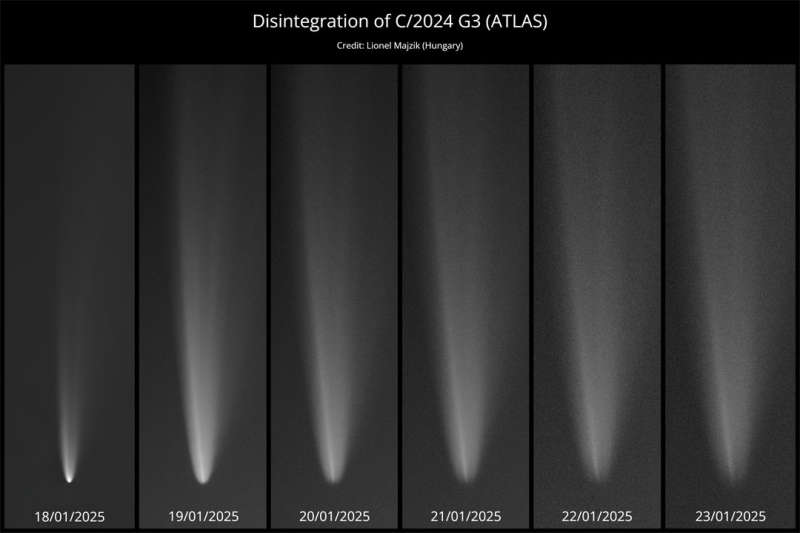Credit & Copyright: Lionel Majzik
Explanation:
What's happening to Comet G3 ATLAS?
After
passing near the Sun in mid-January,
the head of the comet has become dimmer and dimmer.
By late January, Comet
C/2024 G3 (ATLAS)
had become a
headless wonder -- even though it continued to show
impressive
tails after sunset in the skies of
Earth's
Southern Hemisphere.
Pictured are images of Comet G3 ATLAS on successive January nights taken from
Rco Hurtado,
Chile.
Clearly, the comet's head is brighter and more
centrally condensed on the earlier days (left) than on later days (right).
A key reason is likely that the
comet's nucleus of ice and rock, at the
head's center, has
fragmented.
Comet G3 ATLAS passed
well inside the orbit of
planet Mercury
when at its solar closest, a distance that where heat
destroys
many
comets.
Some of comet G3 ATLAS' scattering remains
will continue to orbit the Sun.
Gallery:
Comet
G3 ATLAS
1999 2000 2001 2002 2003 2004 2005 2006 2007 2008 2009 2010 2011 2012 2013 2014 2015 2016 2017 2018 2019 2020 2021 2022 2023 2024 2025 |
Yanvar' Fevral' Mart Aprel' Mai Iyun' Iyul' Avgust Sentyabr' Oktyabr' Noyabr' Dekabr' |
NASA Web Site Statements, Warnings, and Disclaimers
NASA Official: Jay Norris. Specific rights apply.
A service of: LHEA at NASA / GSFC
& Michigan Tech. U.
|
Publikacii s klyuchevymi slovami:
comet - komety
Publikacii so slovami: comet - komety | |
Sm. takzhe:
Vse publikacii na tu zhe temu >> | |
